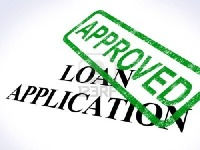The Lowdown on Cashback Mortgages in Canada for 2025
- Kiki Berg, Senior Mortgage Planner

- Feb 10
- 4 min read
Buying a home in Canada isn’t cheap (shocker, right?), and the mortgage world can feel like a maze of fine print and head-scratching terms. One option that’s caught the attention of homebuyers is the cashback mortgage—because who doesn’t like getting a chunk of cash just for signing up? But before you start dreaming of what you’ll do with that extra money, let’s break down how cashback mortgages work, what the big banks offer, and whether this deal is actually as sweet as it sounds.
So, What’s a Cashback Mortgage Anyway?
A cashback mortgage is exactly what it sounds like: when you get approved for a mortgage, the lender hands you a wad of cash (okay, more like a deposit to your bank account, but still). This lump sum is typically a percentage of your total mortgage—usually 1% to 7%—and can be used for anything from renos to furniture to covering those sneaky closing costs.
Sounds amazing, right? Well, hold up—there’s a catch. The lender isn’t just giving you money out of kindness. In exchange for the cashback, you usually get a higher interest rate than a regular mortgage. And if you decide to break your mortgage early? Surprise! You’ll probably have to pay that cashback back in full. Ouch.
How Do Cashback Mortgages Work?
Here’s the play-by-play:
Get Approved – You apply for a mortgage with a lender that offers cashback deals. They review your finances and, if all looks good, approve you.
Get Some Cash – The lender gives you a cashback amount, based on a percentage of your mortgage. For example, if you snag a $500,000 mortgage with a 5% cashback, you’ll pocket $25,000 on closing day. Feels like FREE money...BUT it is NOT.
Pay Higher Interest – That free money isn’t really free. Cashback mortgages come with higher interest rates, meaning you’ll pay more in the long run.
Beware of Breakage Fees – Thinking of refinancing or selling before your mortgage term is up? The bank will want that cashback back—and they won’t ask nicely.
What Are Canada’s Big Banks Offering?
Let’s check out what the major players—BMO, RBC, CIBC, and Scotiabank—are dishing out when it comes to cashback mortgages.
1. Bank of Montreal (BMO)
Cashback: Up to 5% of your mortgage.
Example: Borrow $400,000? Get up to $20,000 back.
Fine Print: The cashback is tied to fixed-rate mortgages (5 years or longer). Higher rates apply, and if you break the mortgage early—yep, you guessed it—the cashback needs to be repaid.
2. Royal Bank of Canada (RBC)
Cashback: Up to 7% of your mortgage.
Example: On a $500,000 mortgage, that’s up to $35,000 in cashback.
Fine Print: Same deal—higher interest rates, and early breakage means handing back the cashback.
3. Canadian Imperial Bank of Commerce (CIBC)
Cashback: Up to 5% of your mortgage.
Example: On a $300,000 mortgage, that’s $15,000 in cashback.
Fine Print: Fixed-rate mortgages only, and early breakage = paying back the cashback.
4. Scotiabank
Cashback: Up to 5% of your mortgage.
Example: A $450,000 mortgage could get you $22,500 in cashback.
Fine Print: Like the others, you’ll pay higher interest and must return the cashback if you break your mortgage early.
Is It Actually Worth It? Let’s Compare
To see if cashback mortgages are a good deal, let’s look at three scenarios using a $300,000 mortgage over a 5-year term.
Scenario 1: Cashback Mortgage at 3%
Cashback: $15,000
Interest Rate: 3%
Monthly Payment: $1,419
Total Interest Paid in 5 Years: $40,000
Scenario 2: Cashback Mortgage at 4.5%
Cashback: $15,000
Interest Rate: 4.5%
Monthly Payment: $1,667
Total Interest Paid in 5 Years: $60,000
Scenario 3: Standard Mortgage at 4%
Cashback: $0
Interest Rate: 4%
Monthly Payment: $1,583
Total Interest Paid in 5 Years: $53,000
Conclusion? You might get a chunk of cash upfront, but the higher interest rate means you could end up paying way more over time.
Pros & Cons of Cashback Mortgages
✅ Pros:
Instant Cash – Need money for renos, moving costs, or new furniture? This helps.
No Need for a Loan – Unlike a personal loan or line of credit, no separate application is required.
Attractive for First-Time Buyers – If you’re tight on cash after your down payment, this could help cover early expenses.
❌ Cons:
Higher Interest Rates – You’ll pay more over the life of the mortgage.
Breakage Penalties – Refinancing or selling early? You’ll owe the cashback back.
Limited Use of Funds – Some lenders only allow the cashback to be used for home-related costs like renos, furniture, debt paydowns. Never as downpayment or closing costs.
Can Be More Expensive Long-Term – The higher rate may outweigh the cashback benefits.
So, Should You Get a Cashback Mortgage?
If you absolutely need cash upfront and can handle a slightly higher mortgage rate, it might be a decent option. BUT—if you’re planning to refinance, sell, or break your mortgage early, be careful! The repayment conditions can be brutal.
A better bet? If you can manage your initial home expenses without needing cashback, you’re probably better off going with a standard mortgage at a lower interest rate. Less “free money” upfront, but more savings in the long run.
Final Thoughts
Cashback mortgages sound great, but they come with strings attached. Before jumping in, crunch the numbers, weigh the pros and cons, and talk to a mortgage expert (seriously, don’t skip this step!). Remember: free money is never really free.
Disclaimer: Always consult with a licensed mortgage professional before making a decision. - ME!








Comentários